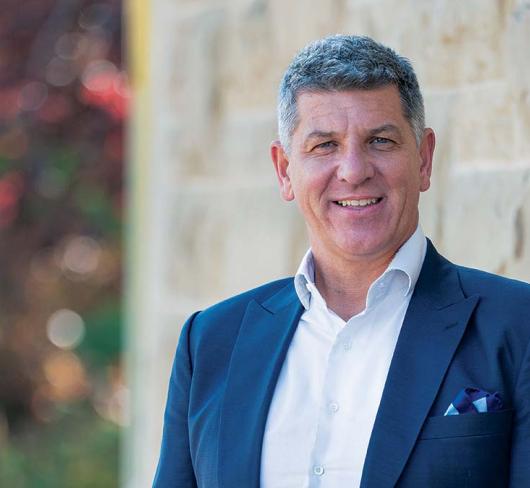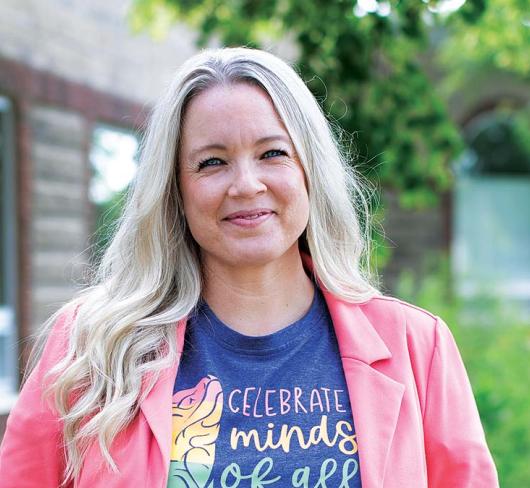
A Digital Age For a Special Needs Education
It’s a new age for children with Autism. Everything is changing, for the better.
I want to talk about bronze alloy for a moment. It may seem off topic, but just stay with me and it will all come back around. About 5,500 years ago, prehistoric societies started developing an alloy from tin and copper. Usually a mix of 88 percent copper and 12 percent tin, the original bronze alloy may have happened by accident. After all, there are two rivers in Syria that contain both tin ore and copper ore. However it happened, the Stone Age was over and the Bronze Age had begun.
You might be asking: So what, Jeff? Why are you telling me this? I have Wikipedia on my computer too. I’ll get back to the Bronze Age in a moment. In the meantime, let me tell you about an equally momentous event. It happened in the office of my school in the spring of 2012.
Allen had never spoken a word. He had never told his mom he loves her. He had never said thank you for his favourite treat. His vocabulary had been limited to exchanging Picture Exchange Communication cards (PECs) for his preferred items. And then one day, when he entered the school office to drop off the class attendance, he noticed the head secretary. Rather than waving, or vocalizing an incoherent sound, he declared clearly, “You’re looking lovely today.” The office filled with laughter and cheers!
The fact that Allen had used his iPad didn’t take away from this moment. Moreover, when he noticed the vice-principal, he told her the same thing. Once again, the staff cheered. Allen smiled, satisfied with himself. He knew he was being funny. He may have even felt a little suave. Those sophisticated emotions could be read on his beaming face.
I wonder what you must being thinking. Perhaps this exchange was an isolated incident? I assure you: quite the contrary.
It was a revolution in Allen’s developmental life. He reached out and communicated in a way that was previously impossible. He “saw” us. We “saw” him.
Let me explain. I work in a classroom designed to support the unique needs of children with autism. Our mandate? Increase communication and decrease negative behaviour. A mighty task indeed. But the good news is that we have great support staff and many tools at our disposal. And this year, we were granted one of the most exciting tools of all: technology!
Through a pilot project at the Simcoe County District School Board, my classroom was supplied with six iPads. If you don’t already know, touch-screen technology is an immeasurable improvement over conventional computer setups for students with autism. For instance, let’s consider how abstract a concept using a mouse is.
Let’s presume that the student knows that the desktop icon represents a game. But here is where things get complicated. He can’t just point at it. He has to use a mouse, which is off to the side and refers to an arrow on the screen. Then when he moves the pointer over to the icon, he has to press the button of the mouse. There is a great deal of abstract thinking contained within these actions.
Touch-screen technology eliminates the abstract. The student can simply point until the tip of his finger literally touches the icon. Magically, a point becomes an action.
Employing the inherent advantages of touch-screen technology, we used several dozen apps over the year. The enormous selection of educational apps in the iTunes App Store allowed us to select apps that aligned with the individual needs and interests of the students. The paradigm of my classroom switched from “How do I get my students to attend to an academic task?” to “How do I get my students to successfully transition away from an academic task?” That is a challenge I was happy to have.
I would like to talk about one of the most important apps we used. Proloquo-2Go is a language augmentative app that combines fully customizable images with speech software, and allows students to “voice” their thoughts. It is pricey, at $190, but for the students who use it effectively it is worth every penny.
By the end of the year, the nonverbal students in my class were able to designate whose turn it was, make a choice of a preferred item, count the date along with the class during calendar time, and say situation-appropriate phrases like “Get Active time is finished!”
The true value of these verbal exchanges became apparent when teachers, custodians, and other staff members came to me and said things like “Now that Allen has a voice, I see his personality.”
The value of being able to make choices, say hello, and answer questions for non-verbal students is starkly apparent. However, we were curious to see if Proloquo2Go could be used for partially verbal students as well.
Norbert is a student in my class who had a small, noun-heavy vocabulary. He could say hello and answer simple questions with one or two words. We had been making some progress, but most of his thinking was not verbalized.
By using Proloquo2Go’s folder function, we began to significantly increase his use of sentences. The folder function allows users to organize a variety of words in a folder. For example, it makes sense to have park-related words in a folder named “Park.”
We used the folder function to create a script of sorts. Each folder was a question that contained answers inside. For example, every morning I had a conversation with Norbert during calendar time. I’d sit in front of him, making eye contact and waving until he said hello to me. I would say hello back and then he would ask, “How are you?” Then he would click on the folder called “How Are You?” Inside that folder there would be four more folders, each named for a different response I might give. Perhaps I would say, “I’m excellent today.” He would then press the “I’m excellent today” folder. Inside that folder, there would be a selection of appropriate responses for him to choose.
The conversation would continue until it reached its natural conclusion. Then we would go back to the home screen again. I would go on to ask him if he had any plans for the weekend. When he pressed the “Any Plans for Weekend?” folder, responses would open up and the process would continue.
While this process started off as a reading of scripts, within three months Norbert learned to respond without using the iPad and to generalize the skills he’d learned to conversations with others. He could answer questions and have mini conversations that were not scripted using Proloquo2Go. He learned that conversations are more than one or two-line exchanges designed to probe for information. Now he knows that conversations are a series of questions, statements, and responses that connect ideas and continue until their natural ending.
Let’s zoom back to the Bronze Age for a moment now (I told you I would!). I imagine two Stone Age citizens discussing the new technology. The first one, admiring a brand new bronze shield says, “Wow, isn’t it great to have a new bronze shield?” The second one, perhaps a bit more discerning, replies, “It’s not just shields. Don’t you see? Sure bronze is going to change warfare, but bronze is going to change art, architecture, music, every facet of society. This changes everything!”
Just as the Bronze Age wasn’t simply about bronze shields, the Digital Age of Education is not simply about iPads or Proloquo2Go. It is not simply a new way of doing what we were previously doing with paper. SMART Board technology and iPads are more than just novelties or luxury items in a classroom for children with special needs. They are an exciting new frontier in special needs education.
It is a new age for children with autism. Everything is changing, for the better. Still think I’m overstating the case? Just ask Allen – he’ll tell you himself!

